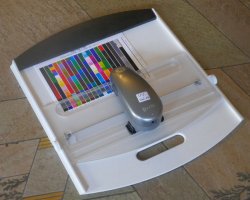- Joined
- Dec 27, 2014
- Messages
- 6,328
- Reaction score
- 7,542
- Points
- 373
- Location
- Germany
- Printer Model
- L805, WF2010, ET8550, T3100X
Yes, the i1Pro comes with a board to aid you when scanning, and there is a spring loaded clamp at the top to hold the patch sheet. I could assume that EFI supplies the spectro kit with the ES-1000 as well with such scanning board. It could possibly be available via Ebay etc as a spare or backup as well.

